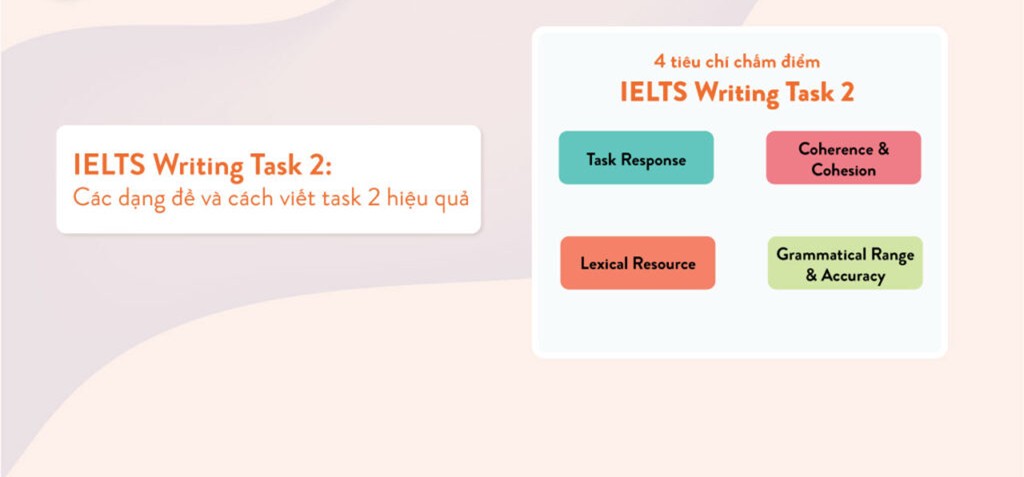Đối với các sĩ tử đang ôn luyện cho kì thi IELTS, Multiple Choice có lẽ không còn là một dạng bài xa lạ. Dạng bài này xuất hiện phổ biến trong bài thi IELTS, trong đó có bài thi IELTS Reading. Có thể nói, đây không phải một dạng bài khó; tuy nhiên, thí sinh cũng rất dễ mắc phải những lỗi sai mất điểm không mong muốn. Vậy, hãy cùng ENVIS tìm hiểu dạng bài này và chiến thuật làm bài hiệu quả nhé!
Giới thiệu về dạng bài Multiple Choice trong IELTS Reading

Ở dạng bài Multiple Choice, thí sinh được yêu cầu chọn câu trả lời đúng nhất từ 4 phương án thay thế (A, B, C hoặc D) hoặc 2 câu trả lời đúng nhất từ 5 phương án thay thế (A, B, C, D hoặc E) hoặc 3 câu trả lời đúng nhất từ 7 phương án thay thế (A, B, C, D, E, F hoặc G). Có thể chia thành 2 hình thức như sau.
- Đề bài đưa ra 3-4 phương án trả lời và yêu cầu thí sinh chọn đáp án đúng. Thường các đáp án sẽ được cho dưới dạng
- Một câu trả lời đưa ra thông tin không liên quan đến bài những vẫn chứa từ khóa.
- Một câu trả lời đưa ra thông tin trái với thông tin có trong bài.
- Một câu trả lời đưa ra thông tin có trong bài nhưng không phải đáp án đúng.
- Câu trả lời đúng.
- Cho 4-5 đáp án và yêu cầu chọn nhiều hơn 1 đáp án đúng cho câu hỏi đưa ra
- Dạng 2 tương tự như dạng 1, nhưng số lượng đáp án thí sinh phải chọn sẽ lớn hơn 1. Dạng này thường khó hơn và đòi hỏi thí sinh tỉnh táo và tập trung để tránh mắc bẫy vì các câu trả lời thường đều có chứa từ khóa
LƯU Ý KHI LÀM BÀI
- Đọc câu hỏi đầu tiên để khoanh vùng thông tin cần tìm trong bài đọc thay vì đọc toàn bộ bài đọc trước.
- Không vội vàng chọn đáp án ngay khi thấy có keyword xuất hiện. Điều này sẽ làm bạn dễ mắc phải bẫy của đề thi khi chưa thực sự hiểu ý nghĩa của phương án.
- Thông tin của đáp án sẽ được sắp xếp theo đúng thứ tự câu hỏi. Do đó, nếu có thể, bạn nên làm bài theo đúng trình tự và đánh dấu vùng thông tin của câu đã làm để dễ khoanh vùng thông tin cho các câu hỏi sau.
- Không bỏ trống bất cứ câu hỏi nào. Trong trường hợp không thể tìm ra lựa chọn đúng, hãy đoán hoặc suy luận bằng phương pháp loại trừ, khi đó vẫn có 25% khả năng bạn chọn được đáp án đúng. Còn nếu bạn bỏ trống phiếu điền đáp án, thì chắc chắn sẽ mất điểm.
Các bước chinh phục dạng bài Multiple Choice IELTS Reading
B1: Đọc kỹ yêu cầu của đề bài (chọn 1 hay nhiều đáp án).
B2: Đọc câu hỏi và các đáp án, gạch chân các từ khóa
B3: Xác định vị trí chứa thông tin liên quan đến đáp án ở bài đọc dựa vào từ khóa.
- Hãy để ý cả các từ đồng nghĩa hoặc cách diễn đạt khác của từ khóa.
- Bạn cần tập trung đọc các thông tin xuất hiện quanh từ khóa để hiểu đúng và rõ ý nghĩa của câu. Bên cạnh đó bạn cần đánh dấu lại vị trí trong bài để biết được thứ tự cho câu hỏi tiếp theo.
- Các bạn có thể áp dụng phương pháp Skimming & Scanning để tìm kiếm thông tin nhanh hơn.
B4: Đọc câu hỏi và các phương án lựa chọn để xác định câu trả lời đúng. Bạn cần đọc toàn bộ đáp án để tránh bỏ sót đáp án đúng.
B5: Kiểm tra lại toàn bộ đáp án
Thực hành
/Cambridge IELTS 10 Reading Test 03/
Beyond the blue horizon
Ancient voyagers who settled the far-flung islands of the Pacific Ocean
An important archaeological discovery on the island of Efate in the Pacific archipelago of Vanuatu has revealed traces of an ancient seafaring people, the distant ancestors of todays, Polynesians. The site came to light only by chance. An agricultural worker, digging in the grounds of a derelict plantation, scraped open a grave – the first of dozens in a burial ground some 3,000 years old. It is the oldest cemetery ever found in the Pacific islands, and it harbors the remains of an ancient people archaeologists call the Lapita.
They were daring blue-water adventurers who used basic canoes to rove across the ocean. But they were not just explorers. They were also pioneers who carried with them everything they would need to build new lives – their livestock, taro seedlings and stone tools. Within the span of several centuries, the Lapita stretched the boundaries of their world from the jungle-clad volcanoes of Papua New Guinea to the loneliest coral outliers of Tonga.
The Lapita left precious few clues about themselves, but Efate expands the volume of data available to researchers dramatically. The remains of 62 individuals have been uncovered so far, and archaeologists were also thrilled to find six complete Lapita pots. Other items included a Lapita burial urn with modeled birds arranged on the rim as though peering down at the human remains sealed inside. ‘It’s an important discovery,’ says Matthew Spriggs, professor of archaeology at the Australian National University and head of the international team digging up the site, ‘for it conclusively identifies the remains as Lapita.’
DNA teased from these human remains may help answer one of the most puzzling questions in Pacific anthropology: did all Pacific islanders spring from one source or many? Was there only one outward migration from a single point in Asia, or several from different points? ‘This represents the best opportunity we’ve had yet,’ says Spriggs, ‘to find out who the Lapita actually were, where they came from, and who their closest descendants are today.’
There is one stubborn question for which archaeology has yet to provide any answers: how did the Lapita accomplish the ancient equivalent of a moon landing, many times over? No one has found one of their canoes or any rigging, which could reveal how the canoes were sailed. Nor do the oral histories and traditions of later Polynesians offer any insights, for they turn into myths long before they reach as far back in time as the Lapita.
‘All we can say for certain is that the Lapita had canoes that were capable of ocean voyages, and they had the ability to sail them,’ says Geoff Irwin, a professor of archaeology at the University of Auckland. Those sailing skills, he says, were developed and passed down over thousands of years by earlier mariners who worked their way through the archipelagoes of the western Pacific, making short crossings to nearby islands. The real adventure didn’t begin, however, until their Lapita descendants sailed out of sight of land, with empty horizons on every side. This must have been as difficult for them as landing on the moon is for us today. Certainly it distinguished them from their ancestors, but what gave them the courage to launch out on such risky voyages?
The Lap it was thrust into the Pacific was eastward, against the prevailing trade winds, Irwin notes. Those nagging headwinds, he argues, may have been the key to their success. ‘They could sail out for days into the unknown and assess the area, secure in the knowledge that if they didn’t find anything, they could turn about and catch a swift ride back on the trade winds. This is what would have made the whole thing work.’ Once out there, skilled seafarers would have detected abundant leads to follow to land: seabirds, coconuts and twigs carried out to sea by the tides, and the afternoon pile-up of clouds on the horizon which often indicates an island in the distance.
For returning explorers, successful or not, the geography of their own archipelagoes would have provided a safety net. Without this to go by, overshooting their home ports, getting lost and sailing off into eternity would have been all too easy. Vanuatu, for example, stretches more than 500 miles in a northwest-southeast trend, its scores of inrervisible islands forming a backstop for mariners riding the trade winds home.
All this presupposes one essential detail, says Atholl Anderson, professor of prehistory at the Australian National University: the Lapita had mastered the advanced art of sailing against the wind. ‘And there’s no proof they could do any such thing,’ Anderson says. ‘There has been this assumption they did, and people have built canoes to re-create those early voyages based on that assumption. But nobody has any idea what their canoes looked like or how they were rigged.’
Rather than give all the credit to human skill, Anderson invokes the winds of chance. El Nino, the same climate disruption that affects the Pacific today, may have helped scatter the Lapita, Anderson suggests. He points out that climate data obtained from slow-growing corals around the Pacific indicate a series of unusually frequent El Ninos around the time of the Lapita expansion. By reversing the regular east-to-west flow of the trade winds for weeks at a time, these super El Ninos might have taken the Lapita on long unplanned voyages.
However they did it, the Lapita spread themselves a third of the way across the Pacific, then called it quits for reasons known only to them. Ahead lay the vast emptiness of the central Pacific and perhaps they were too thinly stretched to venture farther. They probably never numbered more than a few thousand in total, and in their rapid migration eastward they encountered hundreds of islands – more than 300 in Fiji alone.
| 32. According to the writer, there are difficulties explaining how the Lapita accomplished their journeys because …
→ Keywords: difficulties, explaining, Lapita, accomplished, journeys, because → ĐÁP ÁN: C. little information relating to this period can be relied upon for accuracy |
Paragraph 5:
There is one stubborn question for which archaeology has yet to provide any answers: how did the Lapita accomplish the ancient equivalent of a moon landing, many times over? No one has found one of their canoes or any rigging, which could reveal how the canoes were sailed. Nor do the oral histories and traditions of later Polynesians offer any insights, for they turn into myths long before they reach as far back in time as the Lapita. → Họ không thể tìm ra tất cả các thông tin liên quan |
| 33. According to the sixth paragraph, what was extraordinary about the Lapita?
→ Keywords for this question: sixth paragraph, extraordinary about, Lapita → ĐÁP ÁN: A. They sailed beyond the point where land was visible |
Lines 9-14 of paragraph 6:
“The real adventure didn’t begin, however, until their Lapita descendants sailed out of sight of land, with empty horizons on every side. This must have been as difficult for them as landing on the moon for us today,” → out of sight of land = beyond the point where land was visible |
| 34. What does ‘This’ refer to in the seventh paragraph?
→ Keywords for this question: ‘This’, seventh paragraph → ĐÁP ÁN: D. the Lapita’s belief they would be able to return home |
Paragraph 7:
“… may have been the key to their success. They could sail out for days into the unknown and assess the area, secure in the knowledge that if they didn’t find anything, they could turn about and catch a swift ride back on the trade winds. This is what would have made the whole thing work.” |
| 35. According to the eighth paragraph, how was the geography of the region significant?
→ Keywords for this question: eighth paragraph, how, geography, significant → ĐÁP ÁN: C. It provided a navigational aid for the Lapita |
Beginning of paragraph 8:
For returning explorers, successful or not, the geography of their own archipel goes would have provided a safety net. Without this to go by, overshooting their home ports, getting lost and sailing off into eternity would have been all too easy.” → Điều này có nghĩa là địa lý của khu vực đã giúp họ an toàn không bị lạc giữa đại dương rộng lớn. At the end of paragraph 8: Its scores of intervisible islands forming a backstop for mariners riding the trade winds home.” → Câu nói của ông gợi ý rằng những người đi biển đã sử dụng các hòn đảo có thể nhìn thấy được (các hòn đảo có thể nhìn thấy từ đảo này sang đảo khác) để sử dụng gió mậu dịch một cách chính xác để trở về nhà, điều đó có nghĩa là việc di chuyển khi trở về nhà được thực hiện dễ dàng nhờ vị trí địa lý của khu vực. |
Lời kết
Như vậy, ENVIS đã giúp các bạn hiểu hơn về cách xử lý khi gặp dạng bài Multiple Choice trong IELTS Reading cũng như thực hành dạng bài này. Ngoài ra các bạn cũng có thể tham khảo chiến thuật làm các dạng bài IELTS khác trên websites của ENVIS. Chúc các bạn học tập tốt!













